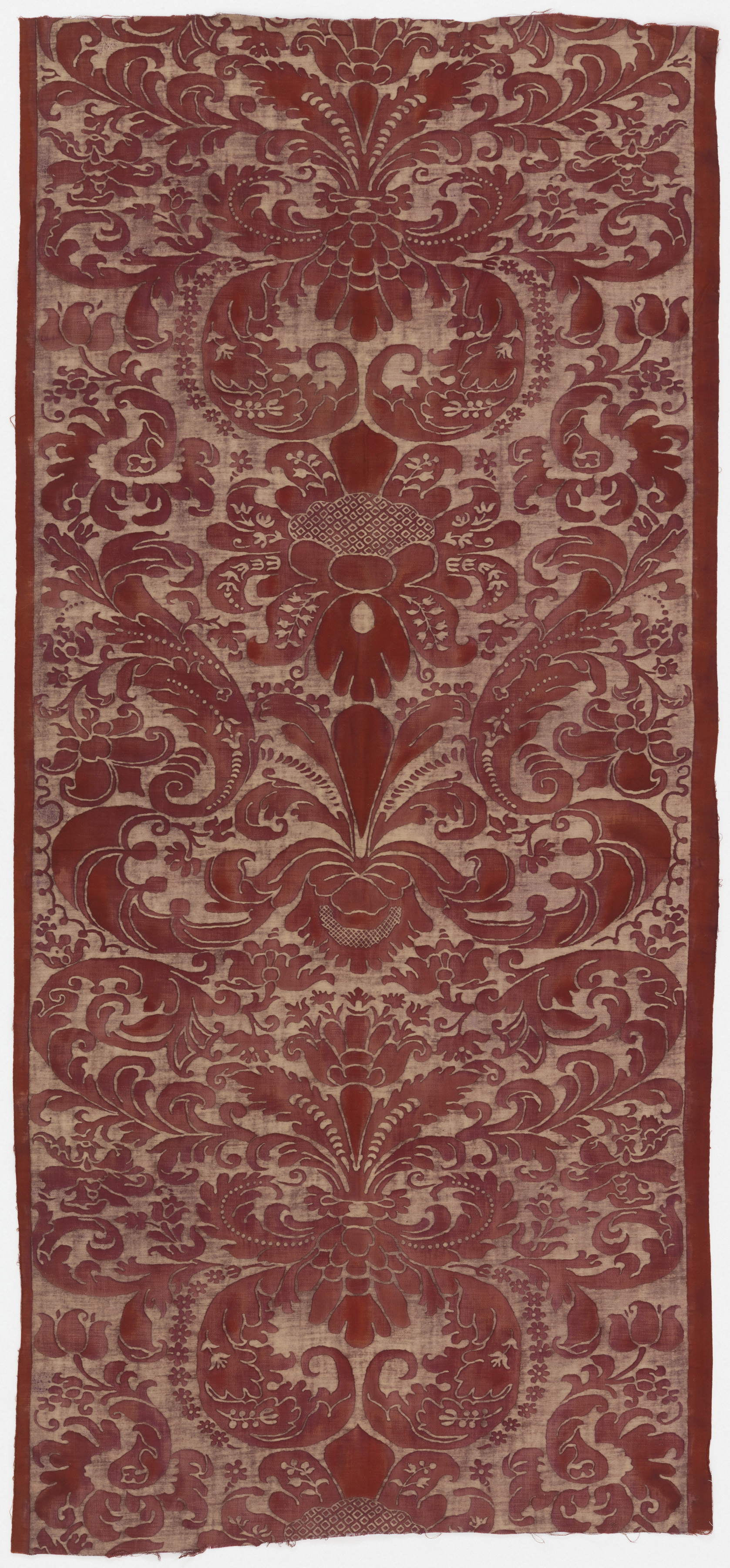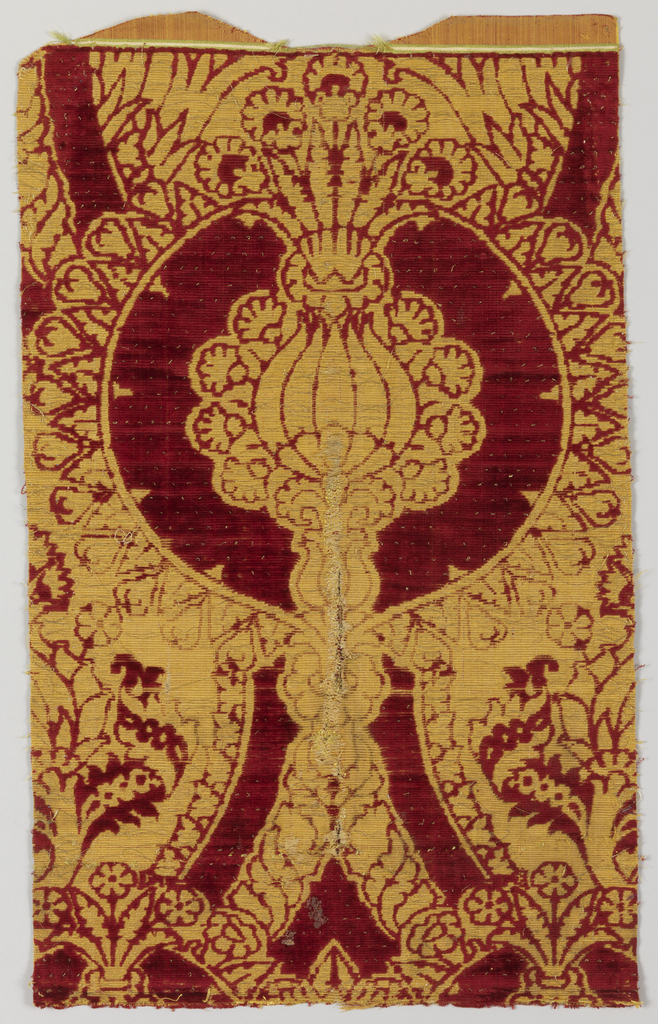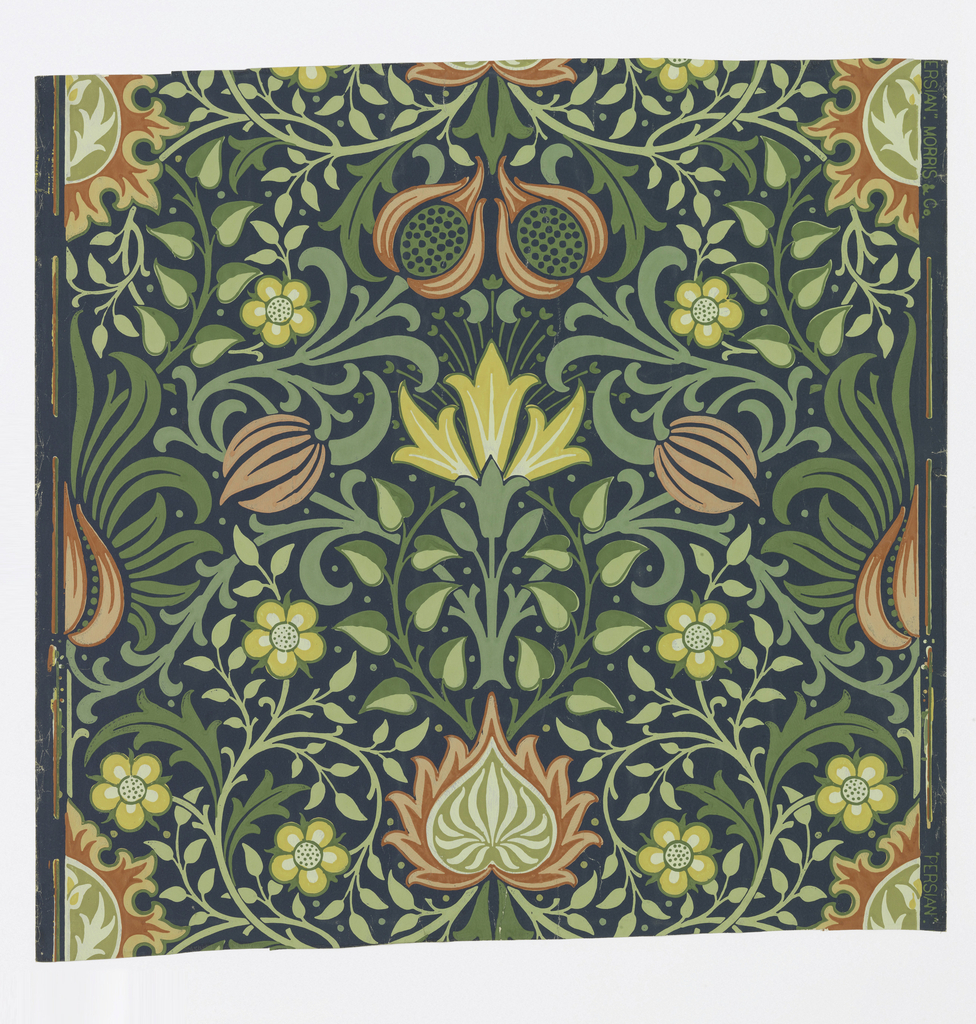Named after the 17th century Italian painter, “Caravaggio” was designed in the spirit of the Italian Baroque with a pattern of pomegranates and heavy vegetal scrollwork foliate. Fortuny achieved the appearance of woven silk damask by printing on a satin weave fabric of long staple Egyptian cotton, which had a natural sheen, and creating depth...
This velvet exemplifies the prodigious skill of Italian velvet weavers in the latter half of the 15th century. The red silk pile is embellished with sparkling allucciolato, or metallic weft loops. The voided areas have no pile, but shine with supplementary wefts of silk wrapped in silver-colored metal. Italian velvet weavers developed a special technique...
This paper focuses on the exotic pomegranate plant, which is native to Persia (present-day Iran). Persian was introduced in 1895 and is woodblock printed in six colors. It was a common design motif to show the life cycle of plants in floral wallpapers. The densely woven pattern containing the pomegranate fruit, stylized floral and scrolling...


